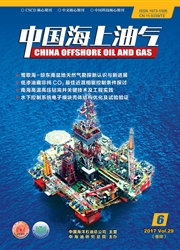

 中文摘要:
中文摘要:
海洋天然气水合物层钻进过程中有效抑制水合物分解是确保安全钻进的重要保障,化学稳定剂可防止水合物分解,但目前缺少作用机理方面的研究报道。利用分子动力学模拟技术模拟了NVT系综,277 K条件下卵磷脂和PVP在sⅠ型水合物表面的吸附特征,对比了两者在单分子吸附和多分子共同吸附条件下平衡态的构象、吸附能和分子间作用能,结果表明:卵磷脂-水合物体系总势能更低,结构更稳定;卵磷脂分子吸附在水合物晶体时会与其附近的其他卵磷脂分子相互作用,碳链之间相互交叉缠结形成比较稳固的网状结构,阻止分解的水和气体分子扩散,从而起到稳定水合物的作用。本文研究结果对研发新型钻井液用水合物稳定剂、提高水合物地层钻井安全性有重要的参考意义。
 英文摘要:
英文摘要:
It is very important to inhibit the gas hydrate decomposition for drilling safety in offshore fields. Some chemical stabilizers can prevent hydrate decomposition but the mechanism is still unknown. The ad-sorption characteristics of lecithin and PVP on the s I hydrate surface were simulated in the constant NVT ensemble at temperatures of 277 K, and the two equilibrium states were compared in terms of conforma-tion, adsorption energy and molecular interaction energy in the conditions of single-molecule-layer adsorp-tion and multi-molecule-layer adsorption. The simulations suggested that hydrate surfaces with lecithin was more stable than the ones with PVP because of the lower potential energy of the former. The lecithin molecules had interaction with other ones nearby when adsorbing on the hydrate surface. The carbon chains of lecithin molecules would form a stable network to prevent the diffusion of water and gas mole-cules and hence stabilize the gas hydrate. The work here is of great reference significance for developing new hydrate stabilizers for drilling fluids and improving the performance in drilling hydrate formations.
 同期刊论文项目
同期刊论文项目
 同项目期刊论文
同项目期刊论文
 期刊信息
期刊信息
